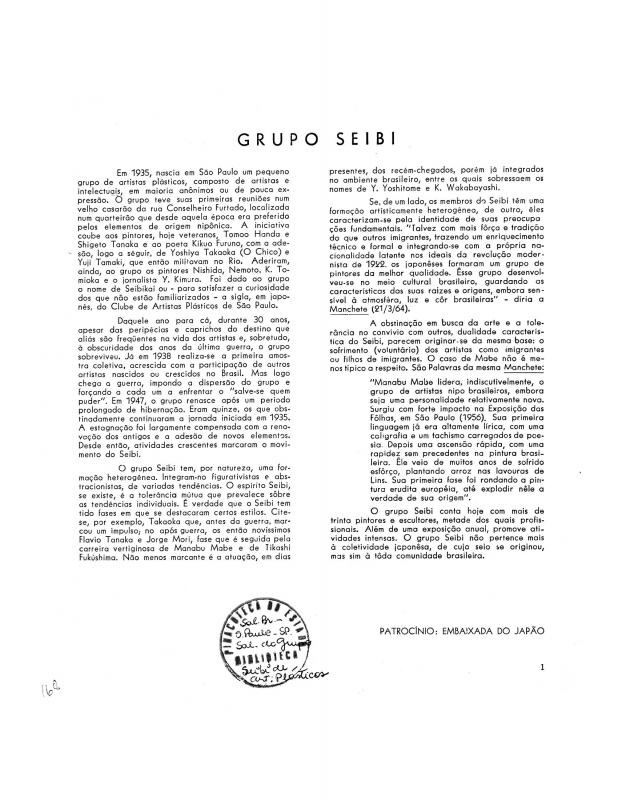This text in the form of a chronicle discusses the crucial role that changes in Shiró Tanaka’s natural and cultural environment played in his development as an artist.
[Flávio] Shiró Tanaka was born in Hokkaido, the northernmost island in Japan, in 1928. His family moved to Brazil in 1932, when the artist was four years old. His parents were peasants living in the Amazon region of Tomé-Açú in the state of Pará. In the forties, the family moved to São Paulo, where the young artist enrolled in the Escola Profissional Getúlio Vargas. It was there that he met other artists, such as Octávio Araújo, Marcelo Grassmann, and Luis Sacilotto. In 1943, he frequented the Grupo Santa Helena, spending a great deal of time with Alfredo Volpi and Francisco Rebolo. Starting in 1947, he formed part of the Grupo Seibi, participating in the 19 pintores exhibition held that year. Owing to the receipt of a grant from the Brazilian government, Shiró traveled to Paris where he was able to visit the studios of Japanese painters Sugai and Tabuchi. While in Europe, he studied (Venetian) mosaics with the well-known Futurist Gino Severini, metal-plate printmaking with Johnny Friedlaender, and lithography at the École Nationale Supérieure des Beaux-Arts in Paris. He was awarded a prize at the Deuxième Biennale of Paris in 1961. He did not return to Brazil until 1983.
Frederico [de] Morais (b. 1936) is a major figure in Brazilian art criticism. He wrote art criticism for Rio de Janeiro-based newspapers Diário de Notícias and O Globo for years. He was one of the most active of the “committed” critics of the sixties and seventies, supporting different avant-garde movements while working as a curator. In the eighties, he took an interest in an aesthetic influenced by crafts and popular forms of expression. This is the article that opens the magazine Galeria, which closely followed the growth of the Brazilian art market at the end of the eighties, the decade that witnessed the “return to painting.”
The catalogue to the 1964 exhibition 8º Salão de Artes Plásticas, organized by the Grupo Seibi, features a text on the history of the group of artists from the Japanese community in the state of São Paulo [see doc. no. 1110646].

